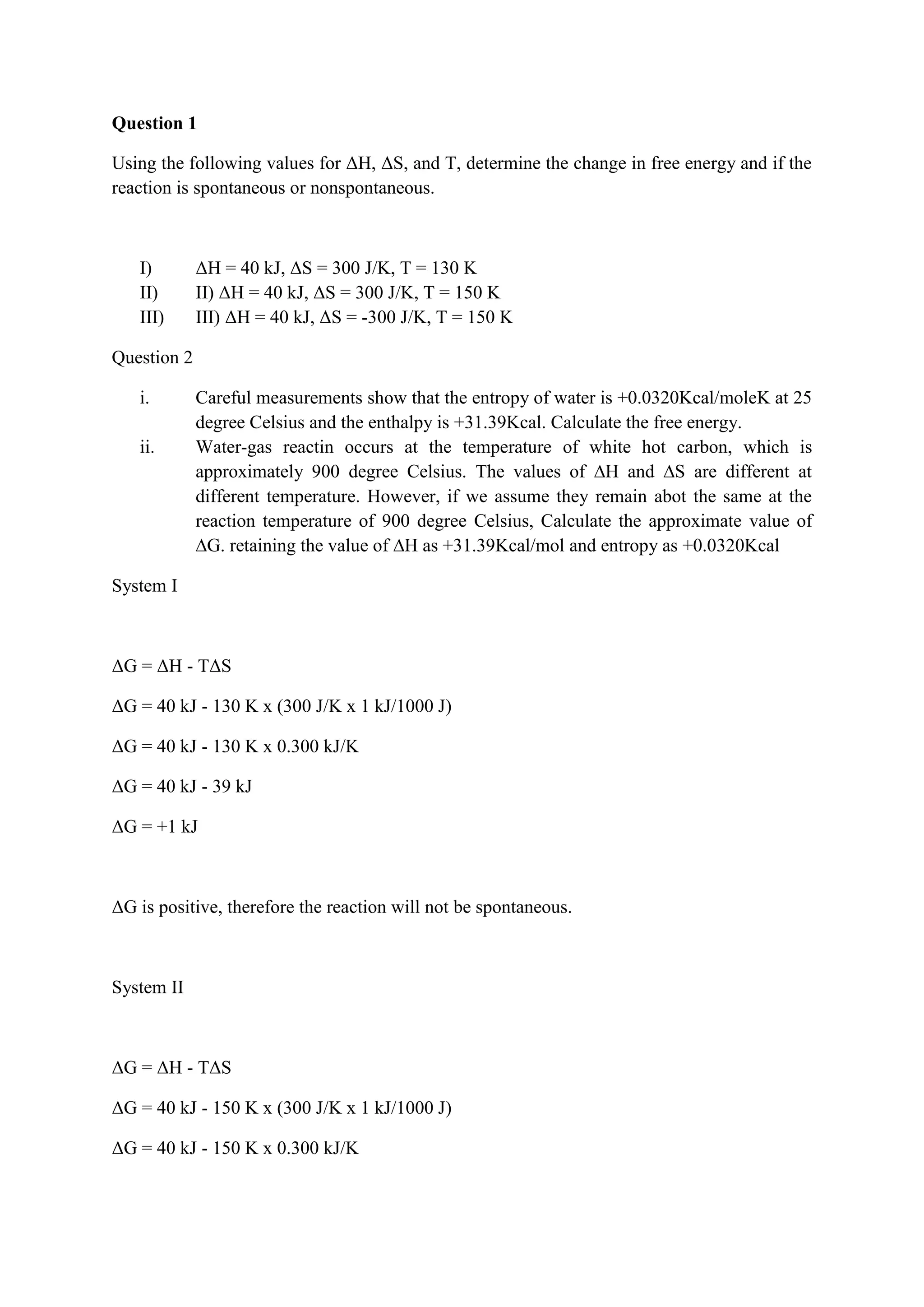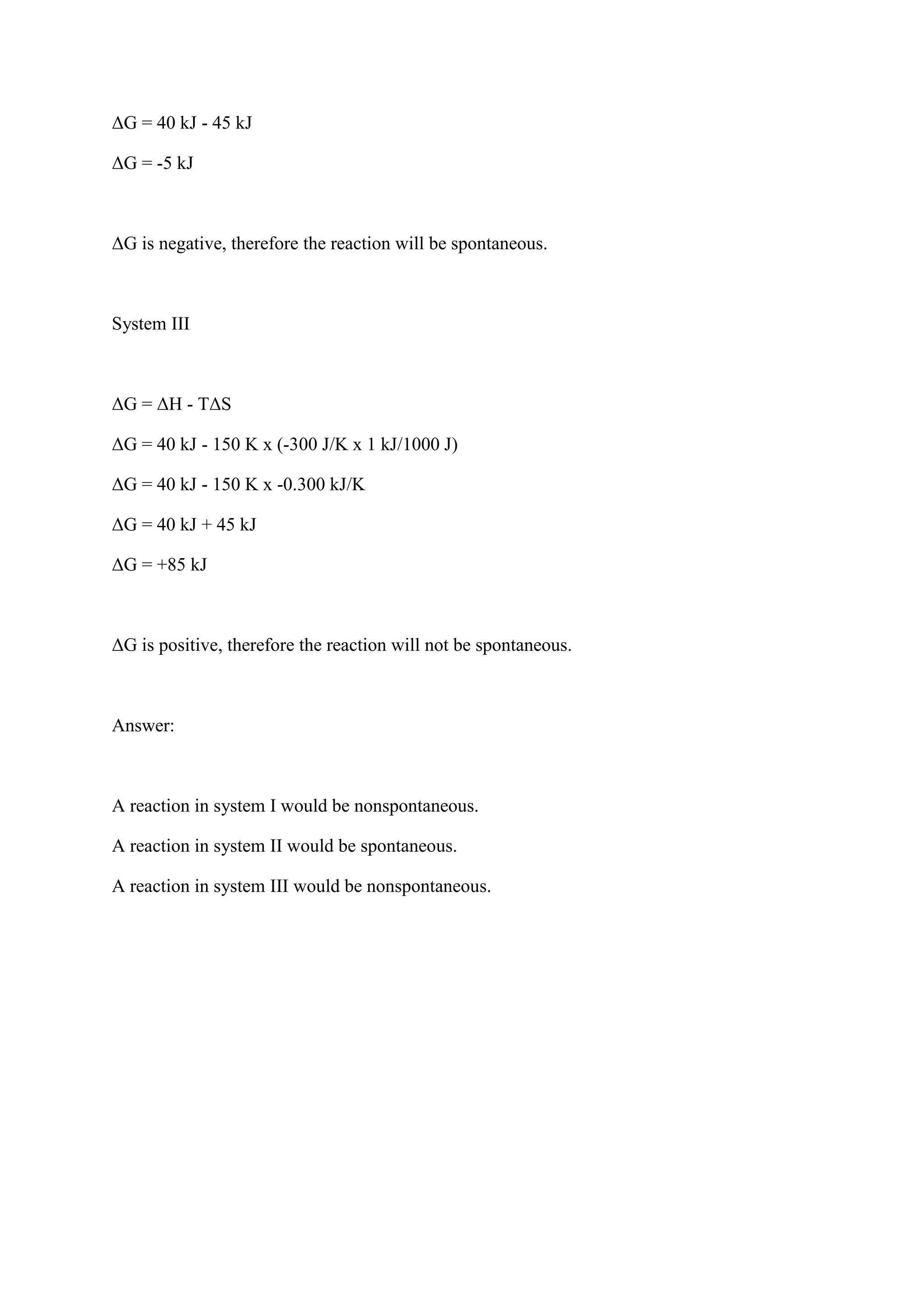The document provides calculations to determine if chemical reactions are spontaneous or nonspontaneous based on changes in enthalpy (ΔH), entropy (ΔS), and temperature (T). It analyzes three systems with different ΔH, ΔS and T values. For system I, ΔG is positive so the reaction is nonspontaneous. For system II, ΔG is negative, indicating a spontaneous reaction. For system III, ΔG is again positive, so the reaction is nonspontaneous.

